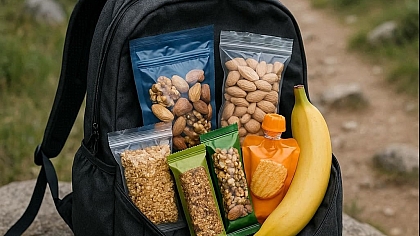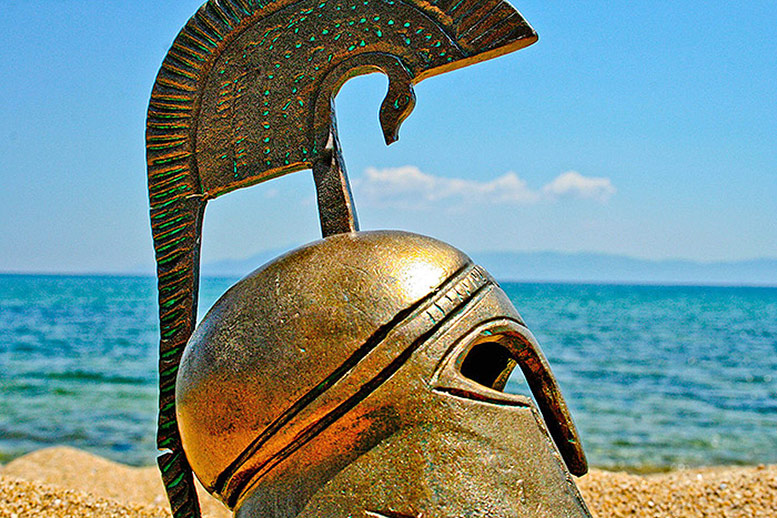
Ancient Activewear: Protection and Mobility
Throughout history, from the ancient Greeks to the Ayyubids, warriors had to wear protective clothing during a battle, but also had to be mobile at the same time, and this has led to many ingenious outfits.
Call it armour or "ancient active-wear", here are some of the top soldier uniforms of the historical world that not only protected the wearer but allowed them to be agile while they were in battle.
The Roman Legionary

The Roman Empire, which was established in 26 BC, had one of the best military forces the world has ever seen and was capable of putting massive armies in the field. At one point, the army had over 380,000 soldiers, excluding the ones that were left in defence of Rome and other cities.
These soldiers had to be well-equipped, and indeed they were; the Roman Legionary was probably the best-equipped soldier of his day. Although the uniform varied at different points in history, here is what the common legionary is most popularly known to have worn.
Under the armour, they wore linen undergarments and a standard-issue tunic (tunica), which was made very light due to the weight of the armour; the soldier still had to be able to move. Wearing pants wasn't the Roman style, but in cold conditions, the soldiers were allowed to wear wool or leather trousers (Bracae) which reached the knees. Caligae were heavy sandals that were worn with leather straps that went halfway up the shin. The belt was called a Balteus, which was plated with tin and had bronze strips.
There were three types of armour that they wore on top of all this, and these were either chain mail, plate armour or scale armour.
Chain mail was the most popular and was even used after the fall of the empire; however, it was very heavy and took a lot of time to produce.
Plate armour was the most effective of the three and provided flexibility as well as maximum protection, but was very costly to make.

Scale armour was cheaper than plate but was less flexible and offered slightly less protection. Nevertheless, it replaced plate armour towards the end of the empire. There were many different types of helmets worn by Roman infantry, but the most common was the Gallic helmet, which had a round top and cheek guards. Centurions had better equipment and sideways horsehair or feather crests symbolising their superior rank.
Viking Warrior
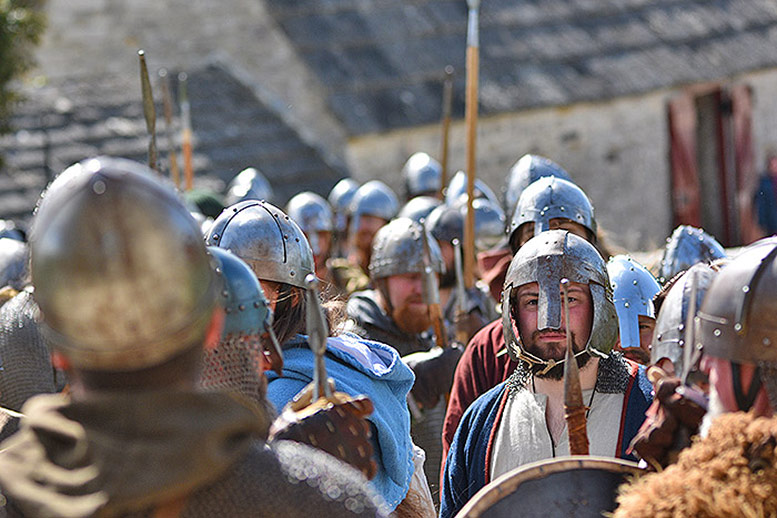
The Vikings were fierce people who hailed from Scandinavia and sailed out of their homeland in longships for trading and raiding from 793-1066 AD. Many people feared them, and the most commonly known event in history connected with the Vikings is probably Harald Hardrada's invasion of England in 1066, before the famous Battle of Hastings.
The first thing that probably comes into your head when thinking about Viking clothing is a horned helmet, but did you know that horned helmets were only used sometimes in rituals, and the common Viking helmet had a round top with a spectacle guard?
Lower-class warriors wore Gambeson, which is a cheaper armour made from quilted cloth, but the Vikings who could afford it wore Lamellar armour, which is made from small iron plates laced together, offering protection but freedom of movement.
The Samurai
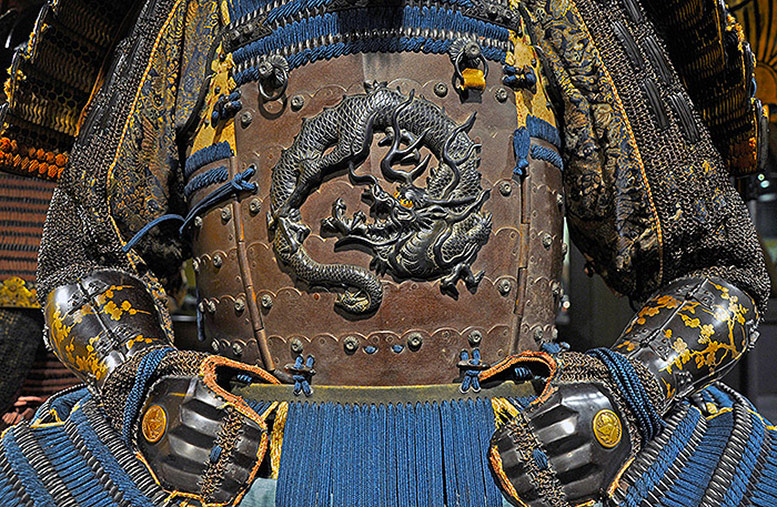
From 1185-1868, the Samurai were a noble caste of warriors in feudal Japan, an equivalent of the European knight. They followed the strict Bushido Code and fought for their clan and lord, resulting in huge wars in Japan for the Shogunate because the Shogun had the status of what others might call an emperor and had supreme power. The most famous of these power struggles ended with the Battle of Sekigahara, where Tokugawa Ieyasu was made Shogun.
Samurai armour looked so grand that it was a surprise that they could manoeuvre at all! But manoeuvre they did, and this made them formidable warriors who struck fear into the hearts of the common soldier called the Ashigaru. The body of Samurai armour called the Dou was foldable for ease of transportation and was worn with large shoulder guards called Sode. The kabuto helmet was quite elaborate and was decorated with clan symbols and creatures from Japanese mythology, such as dragons.
Samurai also wore armour on their arms, thighs, and shins and had armoured panels hanging from the body armour, making them impenetrable. The secret of the manoeuvrability lay in the fact that the individual pieces were laced together, therefore, allowing the warrior freedom of movement. The most iconic and frightening component of the samurai armour was the Menpo, the face mask, which was normally made with a fearsome snarl and a moustache, hiding the identity of the warrior and transforming him into a bloodthirsty demon.
The Ayyubid Dynasty
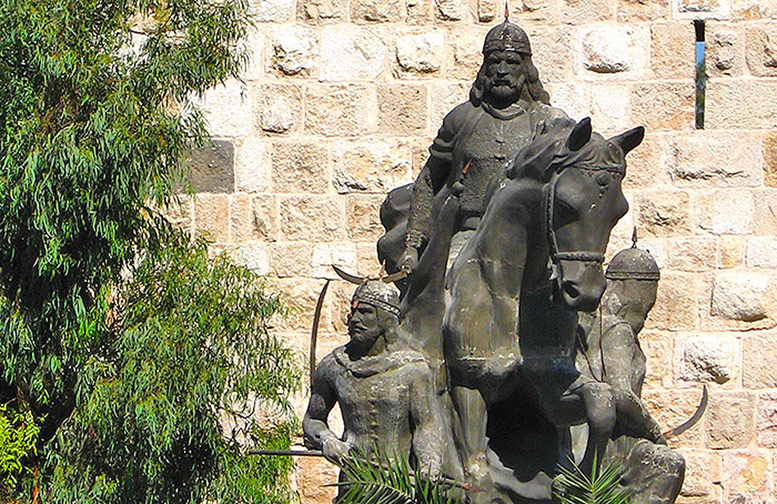
The Ayyubid Dynasty, which was established in 1171, under Salah ad-Din or Saladin, as he was known in Europe, where the Muslim warriors were faced by the Crusaders of the Second and Third Crusades. The Crusaders, who were used to warfare in Europe where heavily armoured knights would fight each other in a display of brute force, were not used to the heat and as a result, were defeated by their enemies in the Middle East.
The Ayyubid soldiers were lightly armoured and used swift ponies that could engage the enemy, fall back and then engage again. This tired out the more armoured knights who even put heavy sets of armour on their horses. The combination of the intense heat and lack of preparation led to many battles, leading to crushing defeats for the Crusaders, such as the battle at the Horns of Hattin in 1187.
There were also heavy units used by the Ayyubids when necessary, but the regular fighting style was swift and evasive. Turbans were wrapped around conical helmets, as was the style at the time, and light Lamellar armour was worn. Light units did not use armour on the horses and sometimes used leather armour for maximum speed without forfeiting their protection.
Heavy units wore mail hauberks and used armour on their horses rather unlike the light riders, who used a Tijfaf on their horses, which was a light garment. Riding boots were worn with Arab-style chausses.
These combinations made them a formidable military force, which the Crusaders were totally not expecting and led to their total retreat and loss of Jerusalem to Salah ad-Din.









